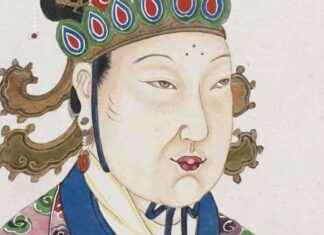An additional alert level was crossed on Thursday 10 November. Faced with the multiplication of outbreaks of highly pathogenic avian influenza (HPAI) on French territory, the level of risk has been requalified as “high” by the government. This decision led to the confinement of all poultry and amplified the distress of farmers, who have been fighting against this abnormally virulent virus since the spring. More than 770,000 animals have already been slaughtered in the past three months to stem the epizootic (epidemic in animals).
France is one of the most affected countries in Europe. In total, 49 outbreaks in farms (six more this week) and 42 outbreaks of captive ornamental birds have been detected since August 1, mainly in Brittany and the Pays de la Loire. In Germany, also very affected, 43 outbreaks of contamination were detected in livestock, according to the weekly bulletin of the animal health epidemiological surveillance platform. If it is no longer counted within the European Union, it is Great Britain which is suffering the most from this epidemic, with 78 outbreaks of poultry and 24 outbreaks of captive birds since the start of the season.
How to explain this accumulation on the Atlantic coast of the continent? “The main epidemiological logic is very simple: it is the route of migratory birds descending towards Africa at this time” explains Jean-Luc Guérin, professor of avian pathology at the National Veterinary School of Toulouse, and laboratory director at Inrae. “From the Netherlands to Spain, passing through France, Germany and Great Britain, one can clearly see by looking at a map that it is the whole north-west coast of Europe which is affected, because it is very exposed to the circulation of wildlife which carries the virus”, he explains.
In France, outbreaks are mostly concentrated in Brittany and the Pays de la Loire. In addition to being on the route of migratory birds, these are also the most poultry-producing regions of the country: the density necessarily favors the number of cases. “There has been a change in the breeding landscape in recent years, underlines the researcher. Historically, HPAI outbreaks developed mainly in the Southwest, within duck farms. But these have been devastated by the latest epidemics, which today creates a difficulty in supplying ducklings.Professionals in the sector have also decided to lower the density of farms in the south in order to prevent the resumption of the epidemic this year. see that it works.”
Several versions of the virus are currently evolving on European territory, which complicates the control of these well-known epidemics. “We are facing a “viral mosaic” in Europe: this virus has an extremely high potential for evolution, much more than Covid-19 for example. In addition, it evolves mainly in wild birds which move from one place to another. continent to another, which are very difficult to access for medicine and research”, explains Jean-Luc Guérin.
A new phenomenon: avian flu started to strike French farms again in the summer, exceptionally early after a catastrophic 2021-2022 season. This resulted in the slaughter of more than 20 million poultry. “The additional problem this year is that the wild birds residing in our territory, which are not migratory, have apparently kept the virus alive throughout the summer. We are no longer just in a classic pattern where the flu arrived with the season of migratory birds”, points out the virologist.
Small farmers and environmental organizations also question the proliferation of large industrial farms in France, which would promote the spread of these epidemics. Twenty-two organizations for the defense of small farmers (Confédération paysanne, Modef), the environment (France Nature Environnement, Greenpeace) and farm animals (CIWF, Welfarm) called on Thursday, November 10, the government to “change radically political in the face of epizootics”.
Several tools exist in the short term to try to stem the epidemic, before it takes on similar proportions to last year. In the short term, sheltering measures (enclosing birds to prevent contact with wild species) and strengthening biosecurity measures (disinfection of equipment, restriction of movement) have proven their effectiveness on many occasions. “It is the equivalent of confinement and barrier gestures”, remarks the professor. “But we also know that this is not always enough. We must also add very regular tests to detect outbreaks and slaughter sick animals,” he believes.
Last essential weapon to fight an epidemic of this magnitude: “the vaccine, which has wrongly been the victim of much reluctance in recent years”, says Jean-Luc Guérin, “in particular because of exporting companies” who fear in particular that poultry unvaccinated would struggle to be marketed in the future. “But in these conditions of virulence of the virus, the farmers and the exporting companies realize that this doctrine of rejection of the vaccine against the HPAI is outdated”, he adds. Tested in France but not yet authorized in Europe, the vaccine against avian influenza is now eagerly awaited by poultry professionals, tired of such viral repetition.








